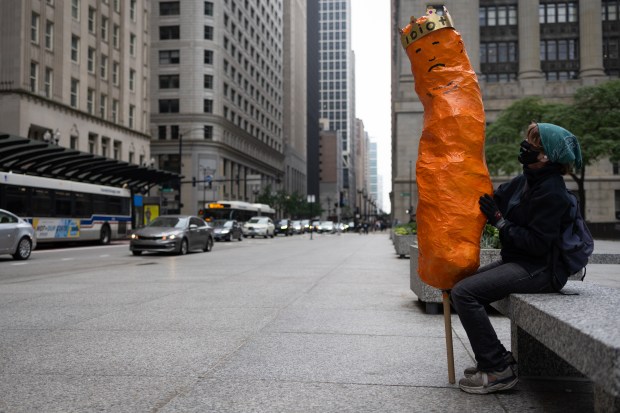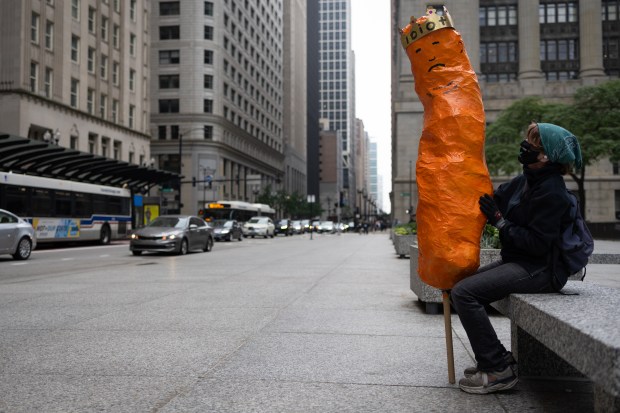As the last notes of “The Star-Spangled Banner” faded away, retired Lt. Col. Max Torrence held himself as erect as the young soldier he once was as he placed a wreath at the Normandy American Cemetery and Memorial in northern France on March 30 to commemorate the upcoming 80th anniversary of D-Day.
On June 6, 1944, the Allied powers invaded five Normandy beachheads: Utah, Omaha, Gold, Juno and Sword, in an operation code-named Overlord, eventually liberating France from Nazi control and changing the course of World War II.
Following a three-gun salute, the sonorous notes of a bugler playing taps rang out across an endless sea of crosses that mark the graves of more than 9,300 fallen soldiers.
Torrence, a Vietnam veteran from Atlanta, said it’s a moment he will never forget.
“As I turned back from helping to lay the wreath, I looked up and saw all the white crosses gleaming in the sun, and I got choked up,” Torrence said. “The price of freedom was paid with the blood of our fallen.”
Gathered around a towering bronze statue called “Spirit of American Youth Rising from the Waves,” a group of Americans observed a moment of silence, some tearfully remembering their own military family members who had served in WWII or one of the many conflicts since.
This wreath-laying ceremony was a somber moment in an otherwise festive eight-day Viking river cruise that sailed round trip from Paris along the Seine. The Paris & the Heart of Normandy itinerary takes passengers through the picturesque Norman countryside on the Viking Radgrid longship, stopping at La Roche-Guyon, Vernon and Rouen before arriving at the Normandy beaches. For many Americans, it would be unthinkable to visit this part of the world without paying their respects.
Retired Army Sgt. Maj. Dwayne Riden from Chattanooga, Tennessee, was among them.
“I was a paratrooper with the 82nd Airborne Division,” Riden said, referring to his early days in the army in the 1980s. “As most people know, the 82nd Airborne Division participated in the Normandy invasion (at Utah Beach), so it was near and dear to me to be able to see the beaches where so many lost their lives for the freedom that we have and for the French.”
After a short bus ride past quaint half-timbered houses and verdant meadows, the group arrived at Omaha Beach. It’s hard to fathom that this tranquil site framed by majestic windswept bluffs was the bloodiest of the five landing sites on the Normandy coast.
On D-Day the beach was a cacophony of machine gun fire and shouting soldiers as they attempted to breach Hitler’s Atlantic Wall, an extensive system of coastal defenses. Monstrous military landing craft jammed the shore, and the normally fresh sea air was thick with the acrid smell of explosives, participants were told during the tour.
The bodies of U.S. service members floated in the water, the result of 27 amphibious Sherman tanks sinking in the turbulent waves of the English Channel. Others lay on the beach, shot down by German gunners as they raced through a deadly obstacle course of barbed wire, concrete fortifications and mines trying to reach a modicum of protection at the base of the cliffs.
There were 2,400 American casualties on June 6, but by the end of the day, 34,000 reinforcements had landed. The Germans had taken a big hit and had no reserves arriving to help continue the fight. Despite a disastrous start, the Omaha operation was successful in the end, and historians often refer to D-Day as the beginning of the end of World War II. The Allied victory in Europe came less than a year later in May 1945.
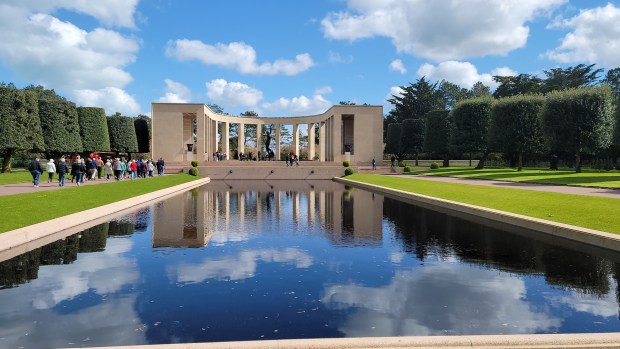
Les Braves, a stainless steel sculpture, stands in the middle of Omaha Beach to honor the soldiers who endangered or sacrificed their lives to free the French from the tyranny of Nazi Germany.
On this spring day, a former soldier faced the crashing waves and gave a solemn salute.
The next stop in this pilgrimage through WWII history was the city of Caen, home to Le Memorial de Caen. This war museum built atop a German bunker chronicles history from 1918 to present day, with a special emphasis on World War II and D-Day.
Before the self-guided tour, guests view “The Battle of Normandy,” a 19-minute film that provides an unblinking account of the devastation of the region.
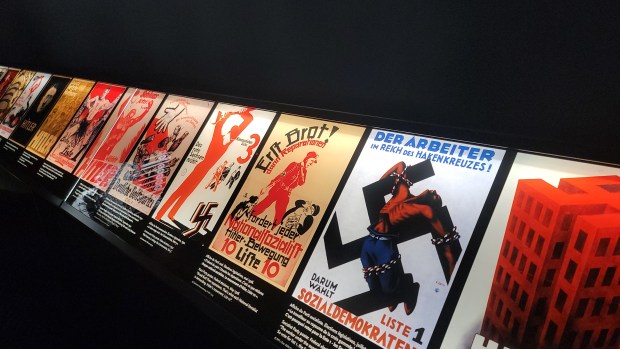
Multimedia presentations combine newsreel coverage of the era with military paraphernalia and disturbing civilian stories to add context to historic events.
On view is a uniform worn by a French female resistance fighter deported to Germany’s Ravensbrück concentration camp to build aircraft engines for the Third Reich.
Unlike the Allies, Germany didn’t have abundant manpower and resources, so it depended heavily on unpaid forced labor. The brutal exploitation of Jews helped fuel the wartime economy, but other groups, including hundreds of thousands of non-Jewish French civilians, were deported and compelled to work for Germany.
Another exhibit remembers the White Rose, a resistance movement founded by German siblings Sophie and Hans Scholl at the University of Munich. The student-led group distributed pamphlets denouncing the genocide of Jews and called for the sabotage of Hitler’s war machine.
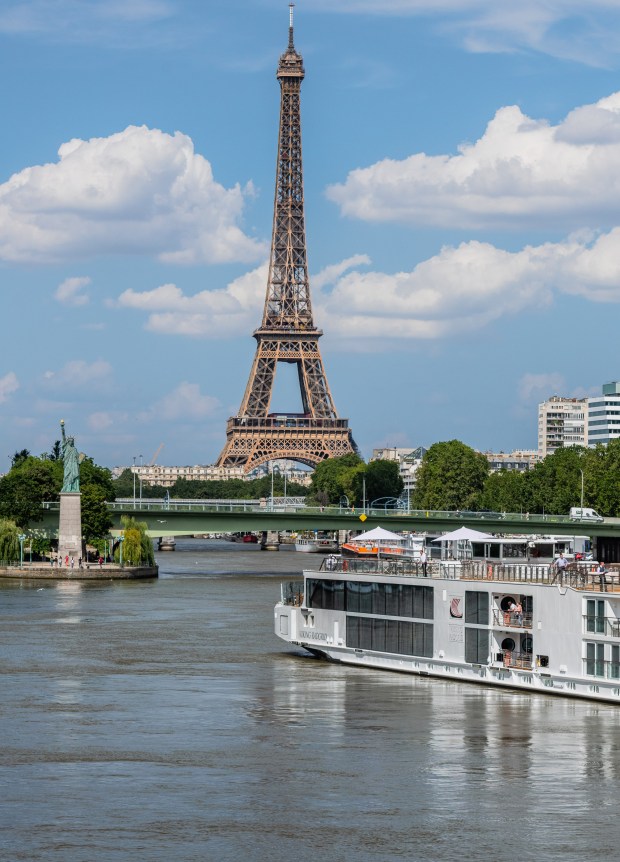
Even after she was arrested by the Gestapo and sentenced to death for treason, Sophie Scholl remained courageous and defiant saying, “I am now, as before, of the opinion that I did the best I could do for my nation. I do not therefore regret my conduct and will bear the consequences of my conduct.”
In Germany today, many schools, streets and plazas are named after the Scholls, who were executed by guillotine.
A collection of British wartime posters encouraging unity and personal sacrifice captures the zeitgeist of the era. A recruitment poster for the Women’s Land Army, an organization that trained women to work on farms to boost food production, depicts a smiling young woman holding a pitchfork in the middle of a harvested field.
German Gen. Wilhelm Richter’s former command post, the bunker beneath the museum, was built to defend the Normandy coast from an Allied invasion. Refurbished to look much as it did during WWII, it has a radio transmission center with equipment from the period.
Back aboard the Viking Radgrid, the mood lightened. Everyone was ready to put the horrors of war aside and partake of the more pleasant aspects of Normandy, such as the regional cuisine.
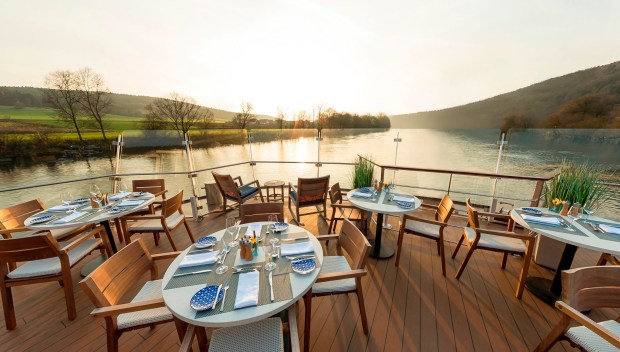
The Taste of Normandy is a special dinner that starts with an aperitif of Calvados, an apple brandy produced exclusively in the region, and a selection of cheeses named after the Norman villages where they are produced. Creamy Camembert, known for its pungent aroma, is the most iconic.
Normandy’s cuisine is seafood-centric, so the bounty of offerings ranged from rustic fish stew to fresh oysters to sole meuniere.
The rest of the cruise was a whirlwind of art, architecture and history. In Auvers-sur-Oise, a small town where Van Gogh lived at the end of his life in 1890, passengers admired the subject of one of the Dutch post-impressionist painter’s most influential works, “The Church at Auvers,” before visiting his grave.
In Rouen, the Norman capital known as “the town of 100 spires,” the Rouen Cathedral reached heavenward in all its Gothic glory. The architectural masterpiece was painted by impressionist Claude Monet more than 30 times.
But for some Americans, Normandy’s numerous cultural offerings will always be secondary to its place in WWII history. The Normandy beaches are hallowed ground, and eight decades after the D-Day landings, they’re a reminder that threats to democracy around the world still loom large and that freedom can never be taken for granted.
Tracey Teo is a freelancer.



